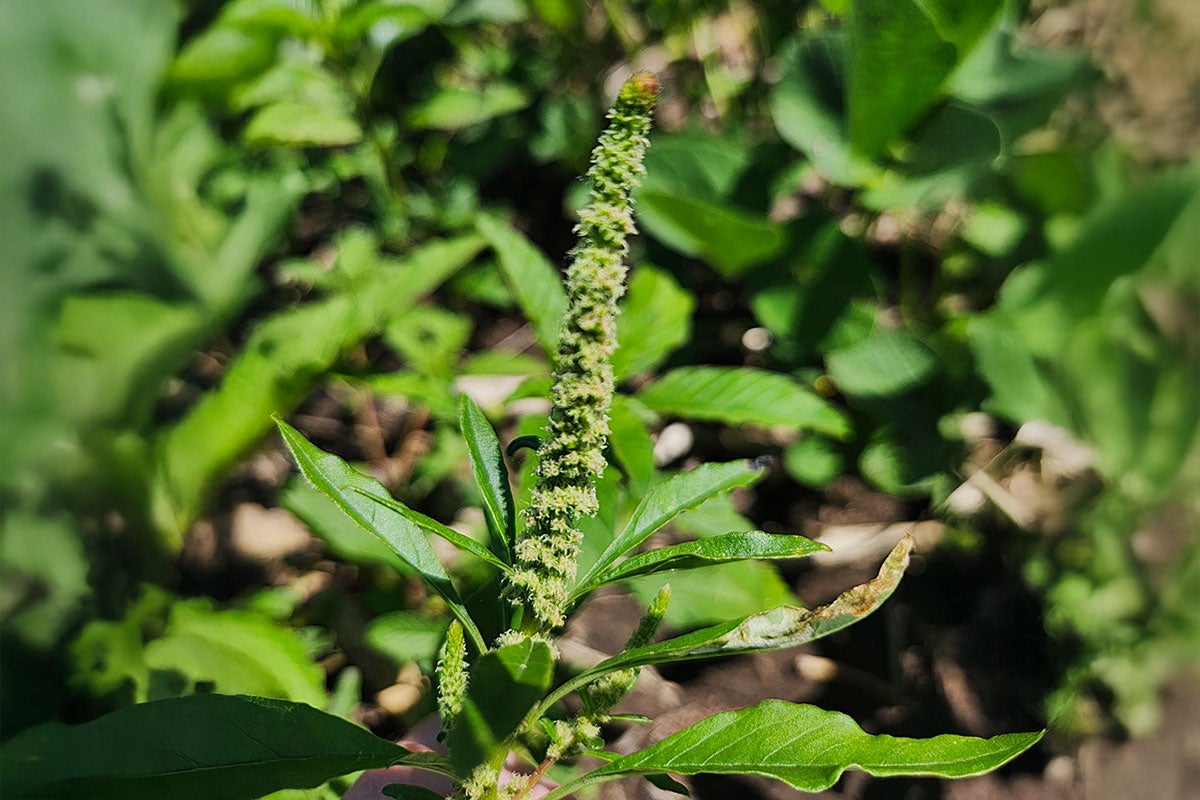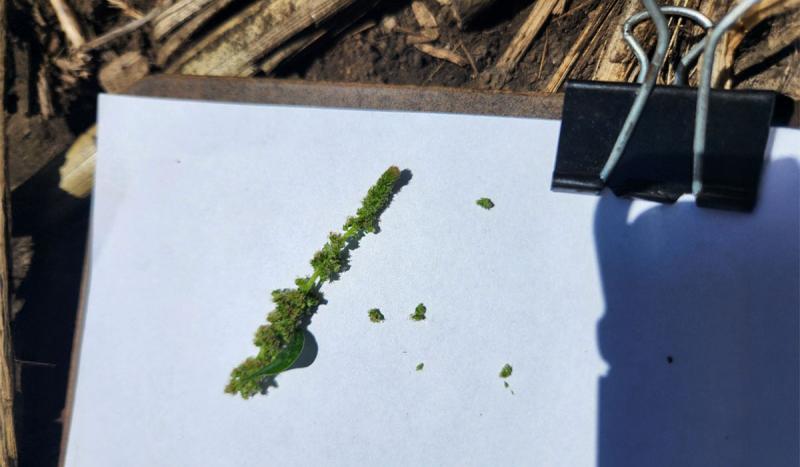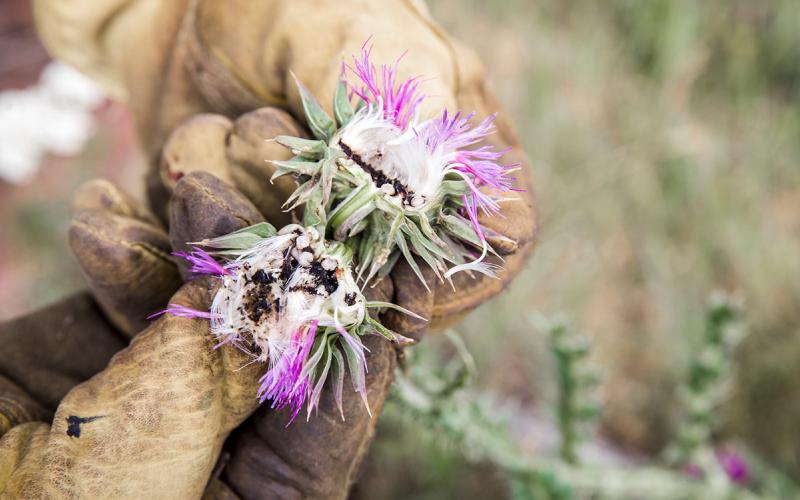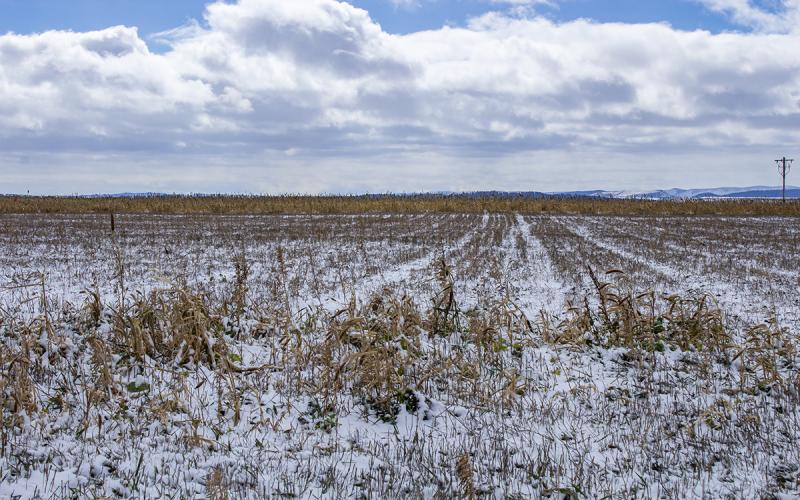Written collaboratively by Eric Jones, Philip Rozeboom, Jill Alms, and David Vos.
Waterhemp is one of the most-difficult weeds to manage in South Dakota row crops. While herbicide resistance is a great factor in the difficulty of managing this weed, the biology of the species plays an important role as well. Waterhemp can grow 1 inch a day if conditions are favorable (i.e., warm temperatures and adequate soil moisture) which can lead to increased competition with crops to potentially reduce yield and harvest efficiency.
Waterhemp Biology
Waterhemp is a dioecious species, meaning there are separate female and male plants. The male plants flower first to ensure there is viable pollen for the flowers of the female plants to produce seed. If waterhemp plants are not effectively managed, a single female plant can produce anywhere from a few hundred to several hundred thousand seeds.
Flowering in waterhemp is dictated by photoperiod (daylength). When the days become shorter (usually in August), plants begin to flower so viable seeds can be produced before a killing frost. However, shading can mimic decreased photoperiod which results in plants flowering much earlier. Male and female waterhemp plants with flowers were observed at the beginning of July this growing season. The flowers of male plants are softer to the touch and will have visible yellow pollen grains that can be dislodged (Figure 1). The flowers of female plants possess bracts (modified leaves that are similar in appearance to thorns) than are sharp to the touch after seeds are produced and exhibit white structures called stigmas (these structures collect the pollen) (Figure 2). Once pollen is produced and female flowers are receptive, viable seeds can be produced in about a week.
Male Waterhemp

Female Waterhemp

Management Considerations

Since these plants initiated flowering due to shading, no seeds were produced—yet. While there are far and few plants that have started flowering, this should be a reminder to manage waterhemp at a small size (2 to 4 inches in height). While there are few plants flowering, flowering waterhemp plants that are not managed timely can produce seeds that will have to be managed in future growing seasons.
Fields should be scouted regularly to determine the size of waterhemp to ensure timely herbicide application and if plants are flowering/producing seeds to be removed from the field.
Refer to the specific herbicide label and the most-recent South Dakota Pest Management Guides to determine usage and application restrictions.


